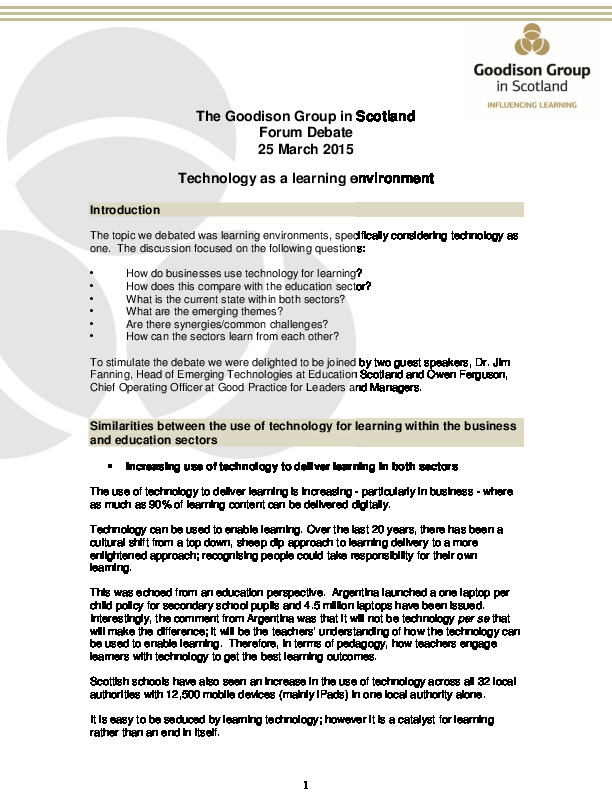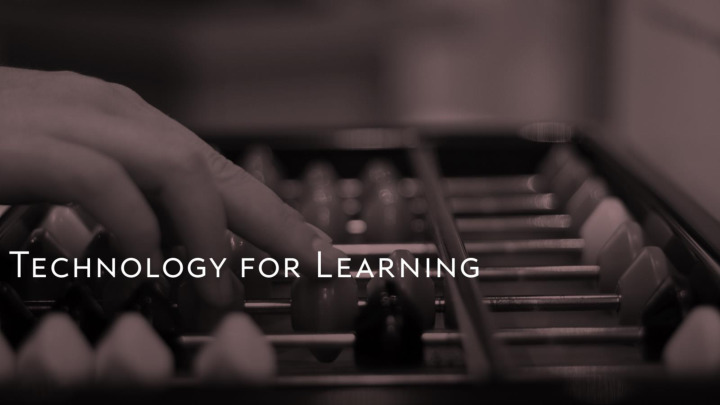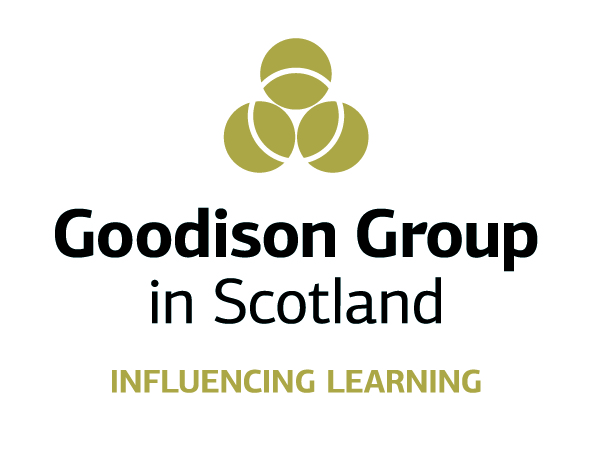Technology as a learning environment
Wednesday 25 March 2015, at the Scottish Parliament
This forum debate in conjunction with the Goodison Group in Scotland explored learning environments, with a focus on technology.
The discussion focused on the following questions:
- How do businesses use technology for learning?
- How does this compare with the education sector?
- What is the current state within both sectors?
- What are the emerging themes?
- Are there synergies/common challenges?
- How can the sectors learn from each other?
Introduction
To stimulate the debate, we were delighted to be joined by two guest speakers, Dr Jim Fanning, Head of Emerging Technologies at Education Scotland and Owen Ferguson, Chief Operating Officer at Good Practice for Leaders and Managers.
Discussion
Similarities between the use of technology for learning within the business and education sectors
Increasing use of technology to deliver learning in both sectors
The use of technology to deliver learning is increasing – particularly in business – where as much as 90% of learning content can be delivered digitally.
Technology can be used to enable learning. Over the last 20 years, there has been a cultural shift from a top down, sheep dip approach to learning delivery to a more enlightened approach; recognising people could take responsibility for their own learning.
This was echoed from an education perspective. Argentina launched a one laptop per child policy for secondary school pupils and 4.5 million laptops have been issued.
Interestingly, the comment from Argentina was that it will not be technology per se that will make the difference; it will be the teachers’ understanding of how the technology can be used to enable learning. Therefore, in terms of pedagogy, how teachers engage learners with technology to get the best learning outcomes.
Scottish schools have also seen an increase in the use of technology across all 32 local authorities with 12,500 mobile devices (mainly iPads) in one local authority alone.
It is easy to be seduced by learning technology; however it is a catalyst for learning rather than an end in itself.
Technology can improve learning availability and effectiveness
The flexible nature of learning technology means that more learners can access more learning, more of the time. Technology, particularly social media, also enables conversations beyond the classroom; peer to peer learning improves understanding and learning transfer/application. Technology can be used to support performance following formal learning interventions e.g. as an aide memoire or to source additional information about a particular problem and stimulate learning conversations Technology can also enable learning in real time or simulate situations it would not be possible to experience.
A number of examples were provided during the discussion including:
Education Scotland held a Digital Learning Week which included a digital story-telling initiative. Schools could sign up for the event and use tools available through the GLOW portal.
NB GLOW is an authentication portal, which enables single sign-on to a whole range of content and service that schools can access, including GLOW TV and video conferencing and Office 365. Every Scottish learner, every teacher and every school in Scotland has access to GLOW.
The children were given a story starter and then added their own chapter, with the story being developed by each class/school. This learning experience was cross curricular – not only about literacy and story-telling but also the creation of the characters. This couldn’t have been achieved without technology. In addition, schools were making connections, talking to each other and sharing as they developed their ideas.
The power of story-telling with technology has also been used in business. A particular company in the nuclear industry created a shared repository to share engineering issues by documenting the story. When an engineer had a problem they looked at the shared database to see if anybody else had encountered something similar then would, typically, phone the individual to discuss – marrying the use of technology and the human element.
A view from one Forum attendee was that if somebody was genuinely interested in a particular topic or have expertise, they are more than happy to share their knowledge, skills and learning with others, creating communities of practice.
Technology can be used to make the learning experience more engaging for teachers and students
Learning through technology mimics the world that many students occupy – a digital world where they can learn on demand and communicate virtually. The flexibility of learning technology also makes it easier for learners to request the learning content that they need, when they need it. Learning that is learner led is typically more engaging.
Differences between the use of technology for learning between the business and education sectors
Learning modality
The optimal way to learn will differ depending on whether you are a novice or experienced learner. If you are completely new to a topic, formal instructor led learning is more likely to be required. If you already have a base of knowledge or skills to build upon, informal learning such as peer to peer support and practice is more likely to engage learners and improve performance. The majority of learning interventions in the business sector target experienced learners.
Flexibility
Technology enables flexible learning, anywhere anytime. Businesses are very likely to be able to take advantage of the flexibility afforded by technology, as they can exercise a degree of discretion over when and how learning is delivered.
Schools, on the other hand, have very fixed structures, rigid timetables and fixed teaching contracts constraining learning delivery. It’s very difficult to impose flexibility on a structure that just isn’t flexible. Primary schools find it easier to adapt as they are not exclusively focused on teaching single subjects.
Learner motivation – push and pull
In business, the vast majority of learners are motivated to learn. It is likely that their career progression and/or financial rewards will depend upon their ability to constantly learn and relearn the knowledge and skills required to perform their role proficiently. The majority of learning content is likely to be accessed by learners on demand (pull) rather than being prescribed (with the exception of some induction and safety/regulatory driven learning content).
In education, particularly in primary and secondary education, all learners are required to attend a learning institution. Although there may be some subject matter choices in later years, most learning content and delivery will be prescribed by teachers (push) rather than students.
Learning outcomes
Learning in business typically focuses on changing behaviours and improving performance of both the individual and the business, whereas education focuses on attainment. In business, learners only need to focus on learning the specific knowledge and skills they need to improve performance. It is not unusual – or undesirable – for learners to only partially complete learning programmes.
An example of this is the development of software developers. Software developers have to learn and upgrade skills faster than most of the working population. The pressure to learn is intense as their skills are, at most, 3 years from being redundant. They have to be willing to give up a software language they have built years of expertise in to move on to the latest development because it is necessary for them to remain relevant. They tend to learn informally through a combination of online learning, such as MOOCs (Massive Open Online Courses) to get over the novice hump, paired working to reduce errors, problem solving and peer to peer learning through communities of practice.
On the other hand learners within an education context are likely to have to complete whole courses/programmes of learning content regardless of need or application.
Learning technology challenges facing business and education
Technology fragmentation
Both business and education are faced with a complex choice of software platforms, devices and tools – which rapidly become obsolete. Many students and employees also expect to be able to utilise their personal handheld devices and laptops to study and learn. It is very difficult for businesses and education alike to keep up with and understand the choices available to them. Without coherent systems architecture it also becomes very difficult to integrate platforms and tools. This can be particularly challenging in businesses or schools where technology sourcing solutions are highly devolved. Diverse platforms increase learner complexity as they have multiple applications to learn how to use and log on to. Fragmentation also creates large integration headaches and support costs for IT departments.
A further challenge for education is the time to develop and embed a new curriculum, which typically takes 10 -15 years – in comparison to the development of new technologies, which takes around 2 years and will only become faster. How can/should this gap be narrowed?
Unequal access to learning technology
The availability and utilisation of learning technology varies, particularly in education, where the likelihood of a pupil using learning technology will be determined by their local authority or school – or even individual teacher preference. Authentication systems such as GLOW can help however there is still variability, particularly around the take up of available software packages/tools by local authorities. Internet bandwidth also varies across geographies which can limit the availability of rich learning content.
The independent school sector can typically move faster than the state school system, which has the potential to create social inequality. In state schools it was suggested that making different decisions and taking advantage of the flexibility of technology should be taken by Head Teachers as they understand their local context. However does devolving this power create a tension as well? Could pushing the power down inevitably lead to more diversity, particularly in attainment levels as some schools will embrace the flexibility and technology and do well with it and others may not? Are the current processes to monitor the system enough to support this type of devolvement and flexibility or is a different approach required?
Finally, a significant minority of citizens cannot access digital learning as they do not have access to the internet at home or through formal institutions like schools or libraries. A recent report by Carnegie UK Trust emphasised this in a research paper called Digital Participation in Dumfries and Kirkcaldy. The reason the research was focused on these two locations was because 33% of households have no internet access (the UK average is 19%).
Demographics and technology
Although theoretically technology is available to all, it is still difficult to attract females to STEM subjects and whilst silver surfers do exist, many older people do not want to engage with digital technology and/or find the pace of change difficult.
A number of barriers were discussed including the terminology and jargon surrounding technology and the introduction of increasingly complex technology within everyday items such as new cars and mobile phones. Also the design of technology can be extremely user unfriendly and there is a need for technology designers/businesses to provide accessible feedback channels.
Older people often rely on the younger generation in the household for support in dealing with technology issues.
Information overload
Learning technology can be likened to Pandora’s box – the answer to any question is theoretically just a click away. Humans are now confronted with as much data in a week as our great grandparents were in a lifetime. Students need to know how to research and discriminate/discern information if they are to learn effectively.
Variation in adoption
Some teachers and learning professionals in business have embraced new technology and are early adopters however it was suggested these are often people who given a dead kipper would turn it into an effective learning resource! The majority of people are learning over time. However, there is a significant minority that will never embrace the use of technology – what do we do with them? Of those that have embraced the digital age, some use technology to substitute existing teaching methods – e.g. the electronic blackboard – others use technology to augment learning. The best use technology to modify and redefine the way they deliver learning all together.
In business – where a significant number of learners will be experts – learning functions are still often modelled too closely on the approach used in education establishments; treating people as novices rather than individuals who have some experience of the area they are working in. Businesses will have novice employees, however they represent a relatively small proportion of the workforce, yet many corporate training courses mirror those in the education sector – formal, instructor led class room delivery.
In Scottish education, a technology impact review has recently been completed to baseline current practice. Three key areas/needs have been highlighted:
- Inconsistent use of technology to creatively harness real time and real world opportunities
- Confusion over the differences between creating technology and being a user of technology. Computing Science is being looked at differently in Scotland in comparison to the rest of the UK. Moving forward, the focus will be on computational thinking as well as coding.
- Creating a brand for technology and ensuring that technology is an essential part of the curriculum.
The opportunities that learning technology presents to business and education
Use technology to teach in a completely different way
Technology should not be used to replicate existing methods but to redefine how students learn, including providing learners with the opportunity to have access to the experts in a particular topic.
One Forum member observed “we started to discuss some really important issues of pedagogy. The industry approach to joint working/peer tutoring raised significant issues about co-creation….. and where this sits with the individualised learning in schools and individual achievement by way of qualifications which are generally used for proxies of achievement….. This all requires a different role for the tutor which we have come up against before.”
Improve links between business and education 1
There is an opportunity to agree the core skills and competencies that are required to create or use technology in business (NB these are two distinct areas) to ensure that schools develop transferable skills.
Improve links between business and education 2
There is an opportunity to build on the conversation we started at the GGiS forum by creating communities of practice where learning professionals from business and education can share ideas, solve problems and create together.
Centralise learning technology hardware, software and platform sourcing decisions in education
Whilst we would argue for a Head Teacher’s right to know how best to utilise learning technology in their school, a consistent Scottish educational software and hardware architecture offers a number of advantages. Business have found that a consistent technology architecture simplifies the user experience, reduces upgrade and integration costs, improves buying power and ultimately makes more technology available to more learners.
Increase the flexibility of the education system to enable it to embrace learning technology
The forum discussed opportunities to improve the flexibility within the education system without leading to more diversity in attainment levels. Head teachers/schools could be empowered to make best use of the technology in the way that suits them and their students e.g. by revising the classroom timetable. Reintroducing a 10 period week in school would allow and encourage teachers to make use of a broader range of teaching methods, including technology.
Create a digital democracy where everyone in Scotland has access to broadband
Access could be funded through the taxation of IT and telecoms providers.
Massive Open Online Courses (MOOCs) are Trojan horses for learning
MOOCs attract learners from all generations and teach students how to learn in a new way. MOOCs are currently being used by several universities in Scotland, however there is an opportunity to expand MOOCs across all aspects of learning and study e.g. adult education.
Intergenerational teaching can be used to develop IT literacy
Although silver surfers do exist, many older learners are denied access to learning through technology through a lack of skills or fear of technology. There are opportunities to bring together different generations to increase digital literacy. A Forum member observed that talking about technology does have the ability to unite us as it is one topic we seem to be happy to share/admit to our level of competence or incompetence. This could provide an opportunity to break down barriers and engage individuals, particularly adults and families in a broader learning conversation.
Conclusion and Next Steps
This was an interesting, wide ranging debate from which we have drawn a number of conclusions:
- Technology is an enabler for learning in both business and education sectors but it is used in different ways for different levels of learner.
- In the main, businesses focus on learners with a certain level of expertise whereas education focuses on novices.
- There are opportunities for educators in business and schools to learn from each other and improve/build upon communities of practice.
- Technology is often used to substitute traditional methods of teaching, however used creatively, there are opportunities for technology to transform learning.
- There is a tension and challenge that exists in the education sector between the flexibility technology can provide and the rigidity of the education system/current structures.
- There are still a number of barriers to overcome before learning technologies can be utilised by the whole of society including digital literacy and access.
In terms of next steps, GGiS would like to consider three areas further:
- Facilitate a partnership between teacher training, IT development establishments and learning technology experts to improve learning technology knowledge and skills amongst future teachers. For example, formal content development and delivery, mentoring, guest lectures and creating communities of practice.
- Consider how to build/improve a learning technology themed community of practice with members from business based learning and development practitioners and education/teachers/lecturers.
- Explore how/if any of the accelerated learning practices utilised by software engineers are transferable and could be applied in other learning environments including education.
Further Reading
Carnegie UK Trust published a research paper called Digital Participation in Dumfries and Kirkcaldy









